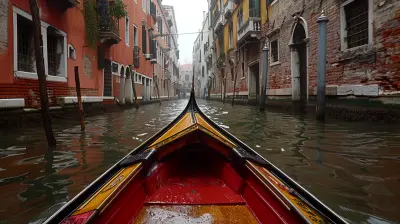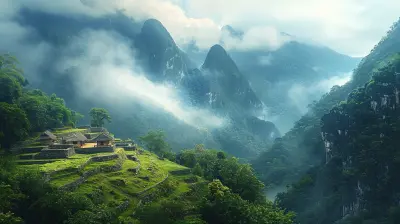Discovering the Unique Flora and Fauna of New Caledonia
29 August 2025
Imagine a land where prehistoric plants still thrive, flightless birds roam ancient forests, and coral reefs burst with colors that look Photoshopped. Sounds like a scene from Jurassic Park, right? But nope—it’s real, and it’s called New Caledonia.
Tucked away in the southwest Pacific, New Caledonia is a biodiversity hotspot that's often forgotten on world maps but unforgettable for anyone lucky enough to visit. With over 75% of its species found nowhere else on Earth, this French territory is a living museum of evolutionary wonders.
Now, if you're a nature lover, a curious traveler, or just someone who appreciates the strange and the beautiful in the wild, buckle up. We're diving headfirst into the weird and wonderful flora and fauna of New Caledonia.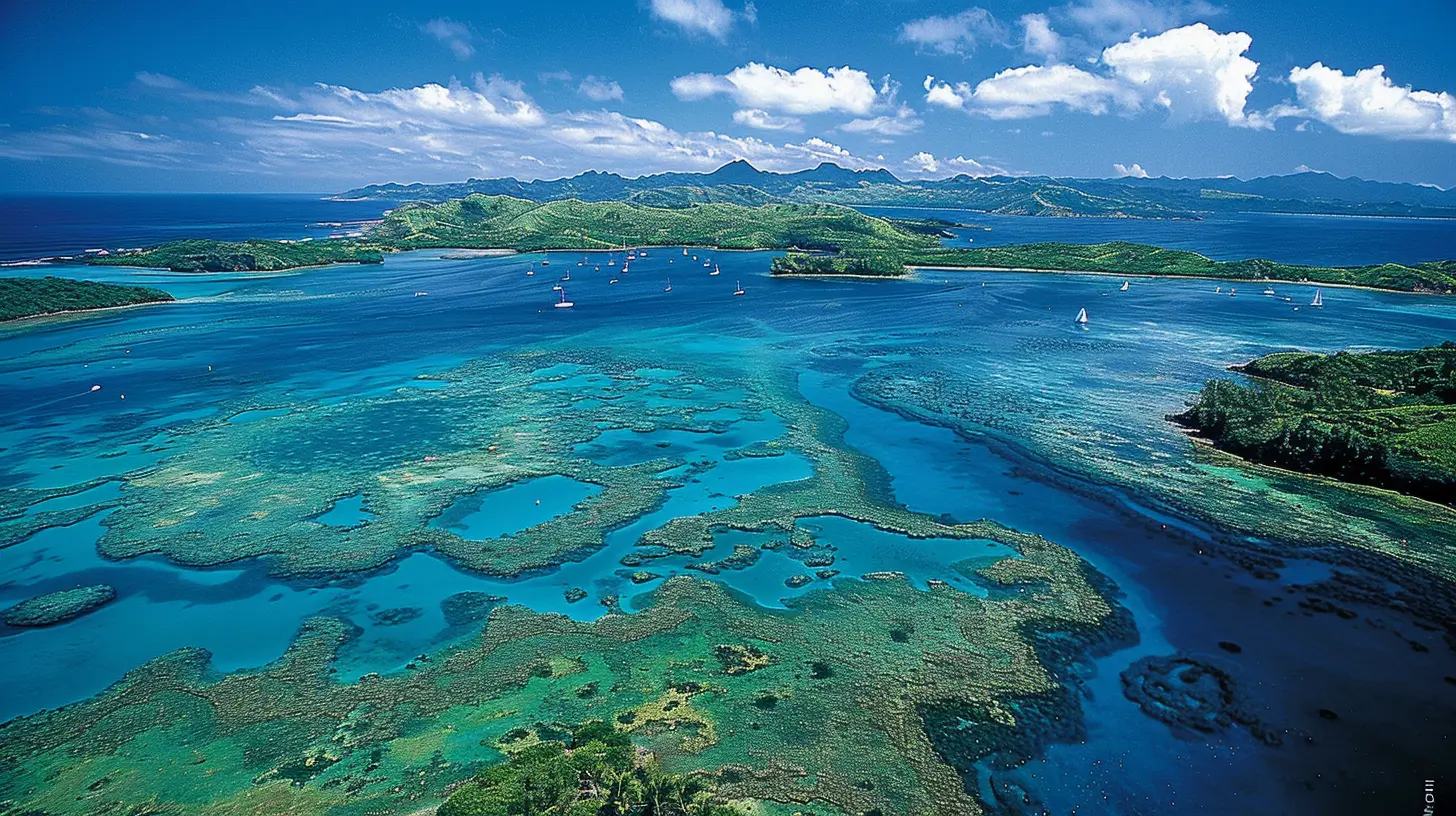
Where the Wild Things Really Are
A Quick Peek at New Caledonia’s Geography
Before we get into the nitty-gritty of what makes this place off-the-charts unique, let’s get our bearings. New Caledonia is made up of the main island, Grande Terre, plus the Loyalty Islands, the Isle of Pines, and several smaller islets. Together, they form an archipelago that’s a mix of tropical beaches, ancient mountains, and dense forests.Why is this important? Well, this diverse geography is part of the reason why New Caledonia is bursting at the seams with unique life.
The Flora: Where Ancient Plants Still Reign
Let’s start with the green side of things. In New Caledonia, you'll find plants that have been around since dinosaurs were stomping around.1. The Araucaria – Nature’s Ancient Architecture
Ever seen a tree that looks like it’s been downloaded from the “Prehistoric Era” folder? That’s the Araucaria for you. These tall, symmetrical trees are as old as the hills—literally. The iconic Cook Pine (Araucaria columnaris) lines New Caledonian coastlines like nature's version of a royal guard.But get this: New Caledonia is home to 13 species of Araucaria, more than anywhere else in the world! These aren’t just trees; they’re living fossils.
2. Maquis Shrublands – The Scrappy Survivors
Maquis isn’t just a fancy word for brush—it’s an entire ecosystem found mainly on the island’s nickel-rich soil. These nutrient-poor lands have forced plants to adapt in mind-blowing ways. Some plants grow ultra-slow; others have developed special defenses like thick leaves and hairy surfaces to survive.It’s survival of the fittest, with a New Caledonian twist.
3. The Amborella – The Mother of All Flowering Plants
Ready to have your mind blown? Meet Amborella trichopoda. It’s not flashy or big, but it holds a secret—it’s the most primitive flowering plant still alive today, the closest living relative to the original flowering plant.Scientists geek out over this plant because studying it is like opening the very first page of the flowering plant family tree.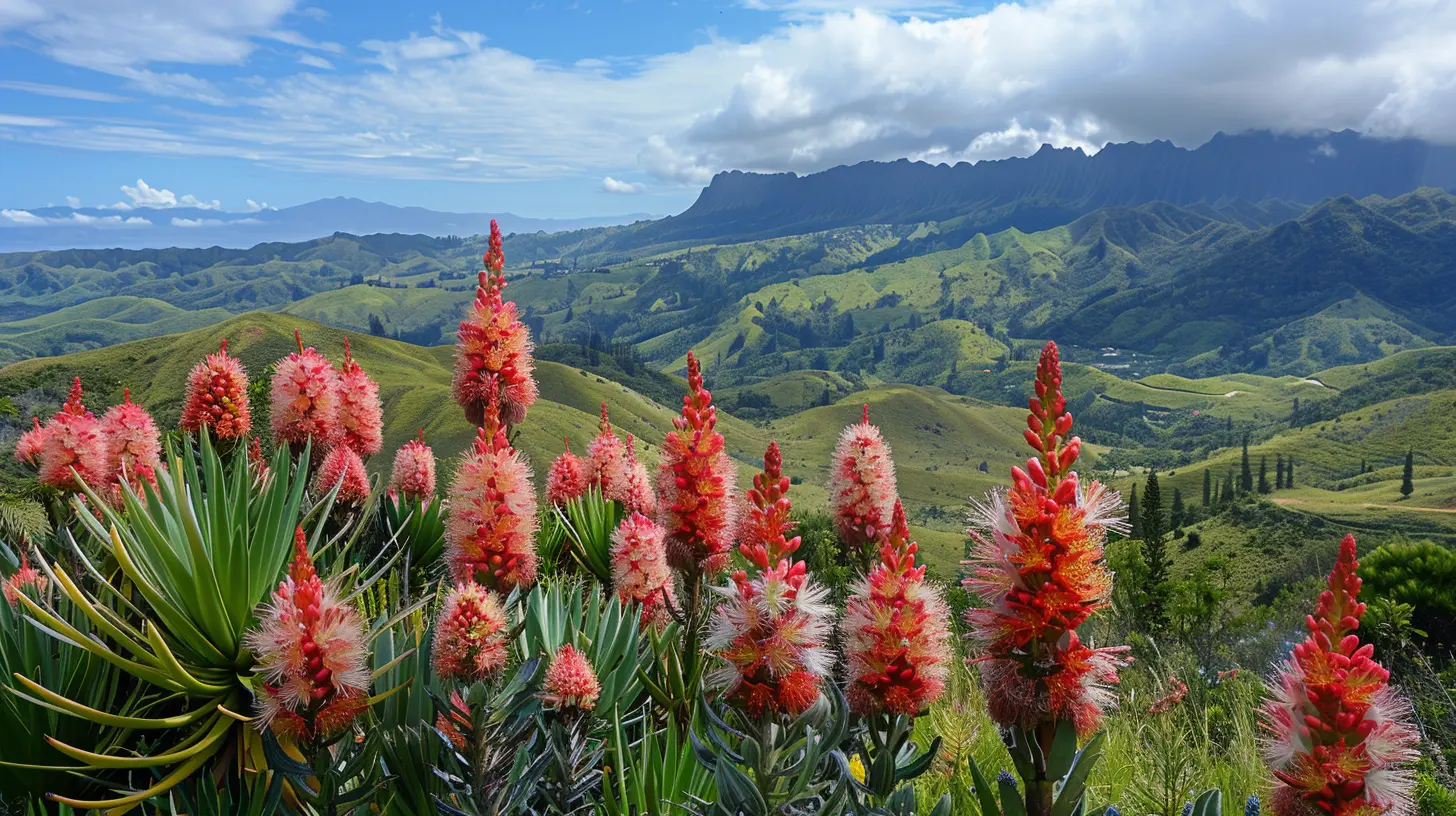
The Fauna: Small But Mighty and Totally Unique
If you think the plant life is wild, wait till you meet New Caledonia’s animals. It’s like nature had extra time to get creative here.1. The Kagu – New Caledonia’s National Treasure
First up, meet the rock star of New Caledonian wildlife: the Kagu. This flightless bird is about the size of a chicken, has ghostly pale feathers, and makes a honking call you'd never expect from a bird. Locals call it the “ghost bird,” and it’s only found here.What’s special about the Kagu? Well, for starters, it’s the only surviving member of its bird family, and it has powdery down that helps keep it clean—kind of like nature's self-dusting device.
And the best part? Kagus are monogamous and fiercely protective parents. Talk about #BirdGoals.
2. Geckos Galore – The Sticky Toed Superstars
New Caledonia is literally crawling with geckos—over 90 species, most of which are endemic. These little guys come in all colors and patterns, from electric green to spotted gray.The crown jewel? The giant New Caledonian gecko (Rhacodactylus leachianus), affectionately known as “Leachie.” It’s one of the largest geckos in the world and has been known to chirp, growl, and even bark. Yes, a barking gecko exists.
3. Skinks and Snakes – Slithering Survivors
The island is also home to over 80 different species of skinks. These sleek, shiny reptiles are the unsung heroes of the underbrush.And while New Caledonia does have snakes, they’re all harmless and non-venomous. Even better? Some of them live underground and are blind. Evolution really went off-script here.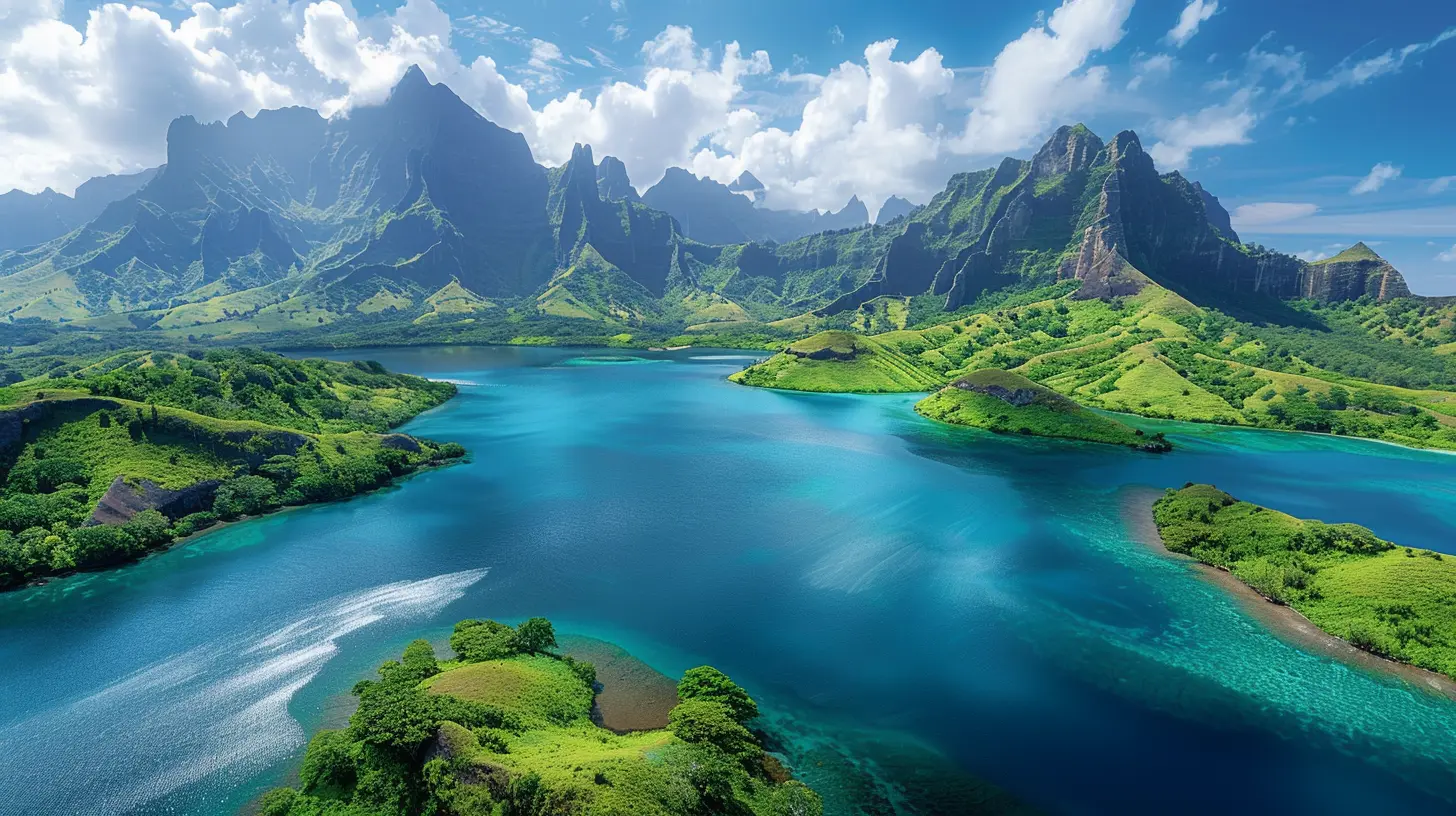
Marine Life: A Whole Other World Below
You didn’t think we’d skip the underwater realm, did you? With one of the largest lagoons in the world and a UNESCO-listed coral reef, New Caledonia’s marine biodiversity is a technicolor dream.1. The Coral Wonderland
The reef system here is massive—stretching over 1,600 kilometers. It’s second only to Australia’s Great Barrier Reef but gets way less attention (and way fewer tourists).Think of it as the VIP section of Earth’s coral clubs. You’ll find hundreds of coral species, some dating back thousands of years.
2. Reef Fish and Marine Megafauna
From clownfish to Napoleon wrasse, the reef fish population is every bit as vibrant as the coral. And don’t even get me started on the big guys: manta rays, dugongs, turtles, and the majestic humpback whales that visit during their annual migration.Ever wanted to snorkel next to a curious turtle or hear a whale sing underwater? Yep, you can do that here.
Threats to This Paradise
It’s not all sunshine and seagrass, unfortunately.Habitat Loss and Mining
New Caledonia sits on one of the biggest nickel reserves in the world. While that's great for the economy, it's rough on the environment. Mining disrupts delicate ecosystems and pollutes waterways, threatening both land and marine life.Invasive Species
Like many islands, New Caledonia has suffered due to species introduced by humans—cats, dogs, rats, and deer all wreak havoc on native species, especially birds like the Kagu.Climate Change
Rising sea levels and ocean temperatures are starting to impact coral reefs, just like everywhere else in the world.But here’s the good news: conservation efforts are ramping up, and eco-tourism is playing a growing role in protecting these natural treasures.
How You Can Experience It All
So, you’re itching to see all this for yourself, right? Here’s how to make the most of a nature trip to New Caledonia.Best Time to Visit
The dry season (April to November) is ideal. You get sunny skies, cooler temps, and a better chance of spotting wildlife without all the tropical downpours.Where to Go for Plants and Wildlife
- Parc Provincial de la Rivière Bleue: Your best shot at seeing Kagus in the wild.- Mt. Humboldt and Mt. Panié: Botanical goldmines loaded with endemic plant species.
- Isle of Pines: Not just beaches—check out the towering Araucaria trees.
- Loyalty Islands: Quiet and culturally immersive, with rich terrestrial and marine ecosystems.
Tour Options
You can choose from guided hikes, snorkeling trips, bird-watching tours, or even scientific eco-tours if you're serious about your nature fix.Final Thoughts: Nature’s Secret Playground
New Caledonia isn’t just another pretty island with turquoise water—although it does have plenty of that. It’s a living, breathing time capsule of evolution. A sanctuary for species that beat the odds and outlived dinosaurs. It’s a place where nature still does its own thing, largely untouched by the outside world.Whether you're a biologist, a backpacker, or just a curious soul, discovering the unique flora and fauna of New Caledonia offers a deeper kind of travel experience—one that sticks with you long after your tan fades.
So, are you ready to trade screen time for green time and step into one of Earth’s wildest classrooms?
Go ahead, pack those hiking boots and a sense of wonder—New Caledonia is waiting.
all images in this post were generated using AI tools
Category:
Oceania TravelAuthor:

Winona Newman
Discussion
rate this article
2 comments
Taylor Moses
This article beautifully captures the rich biodiversity of New Caledonia. The insights on its unique flora and fauna are both informative and inspiring. Thank you for highlighting such an important destination for nature lovers and conservation enthusiasts alike!
November 25, 2025 at 6:04 PM

Winona Newman
Thank you for your kind words! I'm thrilled that you enjoyed the exploration of New Caledonia's unique biodiversity.
Isaiah McPherson
New Caledonia: where trees wear wigs, and birds sing in five-part harmony! Dive into a world where the flora throws a dance party and the fauna serves as the quirky bouncers. Adventure awaits in this botanical wonderland!
August 29, 2025 at 4:48 AM

Winona Newman
Thank you! New Caledonia truly is a magical place where nature’s creativity shines. Glad you enjoyed the article!

